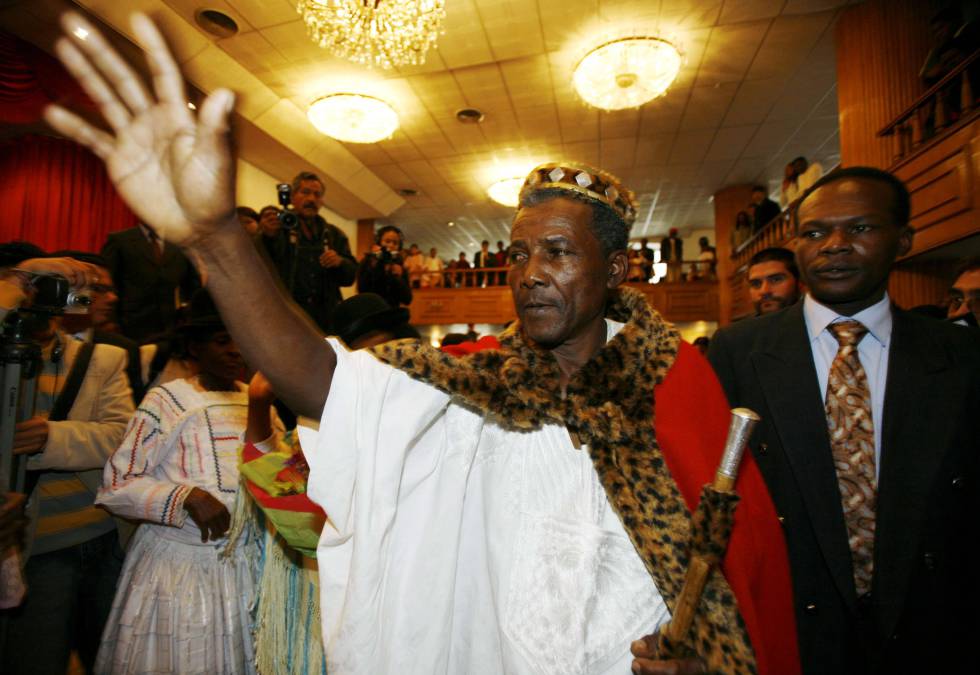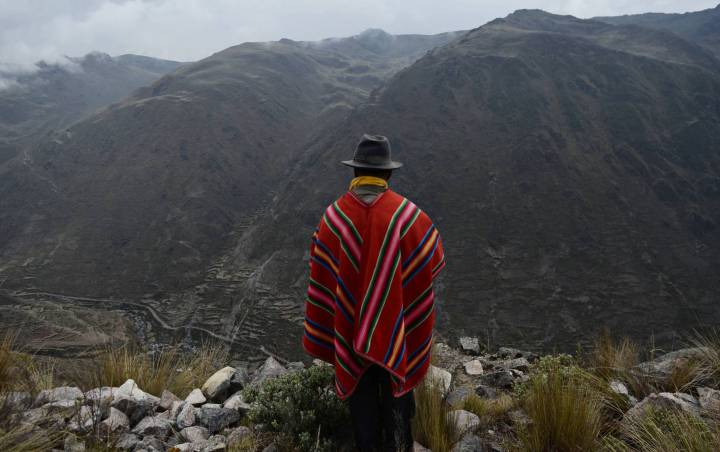Seun Kuti, son of Afrobeat legend Fela Kuti, films video for his song “Black Woman” with cast of Afro-Brazilian women in Rio and Porto Alegre
Note from BW of Brazil:
In a post from November of 2013, BW of Brazil presented an article about an homage to the late, great Nigerian Afrobeat musician Fela Kuti. The Afro Brasil Museum in São Paulo presented an exhibition featured the album cover art of some of the musicians greatest albums. The homage demonstrated how the musician’s following and influence has grown over the past decade or so within the Afro-Brazilian community. Add to this the fact that a percentage of the Africans brought to Brazil during the Trans Atlantic Slave Trade were of Nigerian origin and the fact that some Brazilians in the state of Bahia still speak the Yoruba language and practitioners of Afro-Brazilian religion Candomblé worship the Yoruba orixá (deity) to which they sing and make incantations in Yoruba during worship sessions and one could say that there is a spiritual connection between Nigeria and Black Brazil.
Seun Kuti & Egypt 80 – “Black Woman”
With this is in mind, when Fela’s son Seun, also a musician, decided to record the video for his song “Black Woman” in Brazil, it could be seen as a sort of re-connection. Although the video came out back in February of this year, its theme and images are a perfect feature for a blog dedicated to giving more exposure to black Brazilian women. The recording of Kuti’s video and the cast selected to present black women can’t truly be appreciated unless one is familiar with the type of women who are usually cast as leads and extras in Brazilian Popular Music videos. In fact, just last month this blog asked the question, “Why do the vast majority of funk music videos by male singers overwhelmingly feature white and light-skinned mestiça women in lead and background roles?” In this day and age when Afro-Brazilians are demanding more representation in so many areas of Brazilian society, it’s a shame that it takes an artist to come all the way from Africa to present the beauty of Afro-Brazilian women in a music video. But the sad fact is, the long-time Bahian bloco afro Ilê Aiyê is perhaps the only musical entity in Brazil who consistently make an issue of emphasizing black beauty. As ridiculous as it may sound, I can actually imagine that there are folks out there who would criticize the Kuti video as being racist for featuring all black women; after all, the norm for the standard of feminine beauty in Brazil is clearly the white woman.
For this reason, Seun Kuti must be acknowledged and given his proper accolades for insisting on allowing black Brazilian beauty to shine through in his video (all images of black women in this post are taken from the Kuti video). With the recent debut of the Nigerian produced Bino and Fino cartoon that has been overdubbed in Portuguese for a Brazilian market lacking black characters in children’s cartoons, perhaps this Nigerian/Brazilian connection is one worth exploring further in the future!
Seun Kuti, son Afrobeat legend Fela Kuti, releases video in partnership with Brazilian team
“Black Woman” was filmed on location in Brazil and celebrates the strength of black women
Seun Kuti recently released the video for the song “Black Woman”, through a Brazil-Nigeria partnership. In the cast of the video, there are dancers, athletes, educators, musicians, Paraolympic athletes, actresses and activists.
Son of Nigerian Afrobeat legend Fela Kuti, Seun Kuti recorded the video for his song “Black Woman” on location in two Brazilian cities
“Black Woman” celebrates the strength of
mulheres negras (black women), dealing with the overcoming of suffering and aggression of the day to day. Pedro Rajão was responsible for directing the clip alongside Micael Hocherman and Wagner Novais.
Youngest son of the Afrobeat pioneer, Fela Kuti, Seun is the leader of the band Egypt 80, originally formed by his father. The Nigerian musician took over the group after the death of Fela in 1997, when he was only 14 years old.
Recorded on location in the Brazilian cities of Porto Alegre and Rio de Janeiro, and in Nigeria, the clip is a tribute to black women, representing the strength, endurance and at the same time the capacity to move and transform the world with love and beauty.
The filming includes the artistic presence of the group Balé Das Yiabas, with Ana Flávia, Ludmilla Almeida and Sinara Rúbia. Its mission is to contribute to the strengthening and empowerment of black women, understanding their protagonism.
At the end of the song, Seun cites names of women who influenced him as an artist and activist, such as Olufunmilayo Anikulapo (his grandmother), Maya Angelou (American poet, writer and activist), Angela Davis (American philosopher and militant of the Black Panthers), Zeina Badawi (Sudanese journalist and activist), Rainha (Queen) Amina (notable Nigerian queen of the XV century) and Nina Simone (American musician and activist). Most of them were represented in graffiti homages in the background of the locations.
Below, the director of the clip, Pedro Rajão, remembers the creation of the video.
“I had the pleasure and responsibility of idealizing the project. Soon after I invited Michael Hocherman, the photographer who traveled with me to Nigeria and who most filmed for the documentary
Anikulapo. So that the equipment used was the best possible, we allied with the Cadenza Filmes and Maraberto Filmes and invited Wagner Novais to add to the direction of the characters.
When he learned that Seun would come back to Brazil in 2014, I asked him if he would record a video here. As we had already worked together on other occasions, he said yes. He told me what song he wanted for the video and I fell into the pre-production and concept of the script. I invited the closest professionals, enthusiastic friends and we ventured into this independent enterprise.
In the cast of the video, there are the dancers and militants of Balé das Yiabas, in addition to Vanessa Soares, educator and dancer who for years has used Fela’s biography in her work and was recently on stage at the Shrine in Lagos, Nigeria.
Vanessa Soares dances to Fela Kuti’s “Gentleman” at the Kalakuta Museum in Lagos, Nigeria (1)
There is also a brief appearance of Selma Candeia, daughter of Candeia (2), current president of G.R.A.N.E.S. Quilombo and one of yabás of the homonymous fair of Madureira. The beautiful costumes are designed by Tenka Dara, of Baobá Brasil, who also performs in the clip.
We shot between 2014 and 2015. The first was taken in the old Augusto Pestana train station, in Porto Alegre (with Kuti and band) and then with an excellent team of black women – among dancers, teachers, musicians, Paralympic athletes, actresses and activists – in two other locations in Rio de Janeiro, one of them, the Jacarezinho favela.
Seun’s only request was that we include his daughter in the filming. A few months after coming to Brazil, a photographer friend who lives in Berlin (Felipe Levy) flew to Paris and met with Seun, Adhara (his daughter) and her mother, the background vocalist and Egypt 80 dancer, Yetunde Ademiluyi to register the little Kuti.
Shooting in a train station abandoned since 94 and in an abandoned hotel since the 60s was quite tiring and unpredictable. The whole team worked in a spirit of cooperation and passion for the inspiring theme.
Seun and all the band members and production were very generous and demonstrated enthusiasm for the project, trusting in our partnership.
The daily recording in Jacarezinho was too warm, the whole community was curious and receptive to the team. From the march of black women through the alleys, to the location of Edgar’s bar, up to the dance on the train tracks at sundown.
‘Black Woman’ was recorded in the largest black country outside Africa during the previous
Marcha Nacional das Mulheres Negras (National March of Black Women) in Brasília. It is a tribute, an exaltation of the power and majesty of the many
mulheres negras (black women) fruits of the African Diaspora around the world. A small reverence in the midst of brutalization and
hyper-sexualization of the female body, the victims of Boko Haram, the
Claudias brutally murdered by PMERJ (State Military Police of Rio de Janeiro), mothers and widows of Black Live Matters.
All brightness to black women in the world.”
Pedro Rajão: Director, creator and producer of the clip, director of the documentary ‘Anikulapo’
Credits
Cast: Balé Das Yiabas, Ana Flávia, Ludmilla Almeida e Sinara Rúbia}, Aline Valentim, Eder Francisco de Souza, Edgar Caldas Lima, Isabel Martins, Isabel Zua, Julyana Cristina, Josy Kelly, Le Kita, Lucas Nascimento Santos, Marcelo do Patrocínio, Marta Oliveira, Nay Mahim, Pedro Rajão, Samille Possidonio, Selma Candeia, Suzana Barbosa, Tenka Dara, Thauany Furtado, Thiago Reis Cavalcante, Vanessa Soares
Directors: Micael Hocherman, Pedro Rajão, Wagner Novais
Idealization: Pedro Rajão
Director of Photography: Micael Hocherman
Editing: André Tertuliano
Finalization: Bernardo Neder
Executive Producers: Micael Hocherman, Pedro Rajão
Local production: Elcimar Pereira, Josy Kelly, Rafael Rubim
Art direction: Érick Citron, Micael Hocherman, NAVIU (Nando Pontes and Rafael Bandeira)
Graffiti: Érick Citron, NAVIU (Nando Pontes and Rafael Bandeira)
Cameras: Breno Soares, Felipe Drehmer, Filipe Tomassini, Fernando Teixeira, Micael Hocherman
1st Camera Assistant: Filipe Tomassini, Lucas Cunha, Rodrigo Savastano
2nd Camera Assistant: Claudio Gustavo, Thiago Vasques
Gaffer: Marx Franzen
Electric: Lucas Noleto, Hugo Leo Ribeiro, Marcell Carrasco, Marx Franzen
Costumes: Baobá Brasil
Make up: Leilane Morsch, Marta Oliveira
Still Photography: Stephane Goanna
Cathering: Dhalia Rajão, Kátia Guimarães
Transport: Antonio Pessoa, Fernando
Making Of: Paul Rhasta
Audiovisual production: Cadenza Filmes, Maraberto Filmes
Co-production: Voodoo, Odun Filmes, Groove Cultural
Aerial Images: Libélula Produções
Support: Eduardo Guspe – Duque Galo 250, Produtora Jacaré É Moda, Associação dos Moradores do Jacarezinho
Source:
Moozyca,
Geledés
Notes
- In 2015, Brazilian dancer/producer Vanessa Soares made her first trip to Mãe África (Mama Africa) where she stayed 27 days in Lagos, Nigeria. In the above video, Soares dances to Kuti’s 1973 classic “Gentleman” at the Kalakuta Museum which is dedicated to the life and times of Fela Anikulapo Kuti, and located at his former residence, the Kalakuta Republic, and where he is laid to rest at Gbemisola Street, Allen Avenue, Ikeja, Lagos. The museum was renovated by the Lagos State Government and driven by the Kuti family’s steadfast efforts to promote Fela’s music, and legacy in Nigeria.
- Antônio Candeia Filho, better known as Candeia (Rio de Janeiro, August 17, 1935 – Rio de Janeiro, November 16, 1978), was a Brazilian samba singer and songwriter and a very important figure in the exaltation of negritude. Source
































